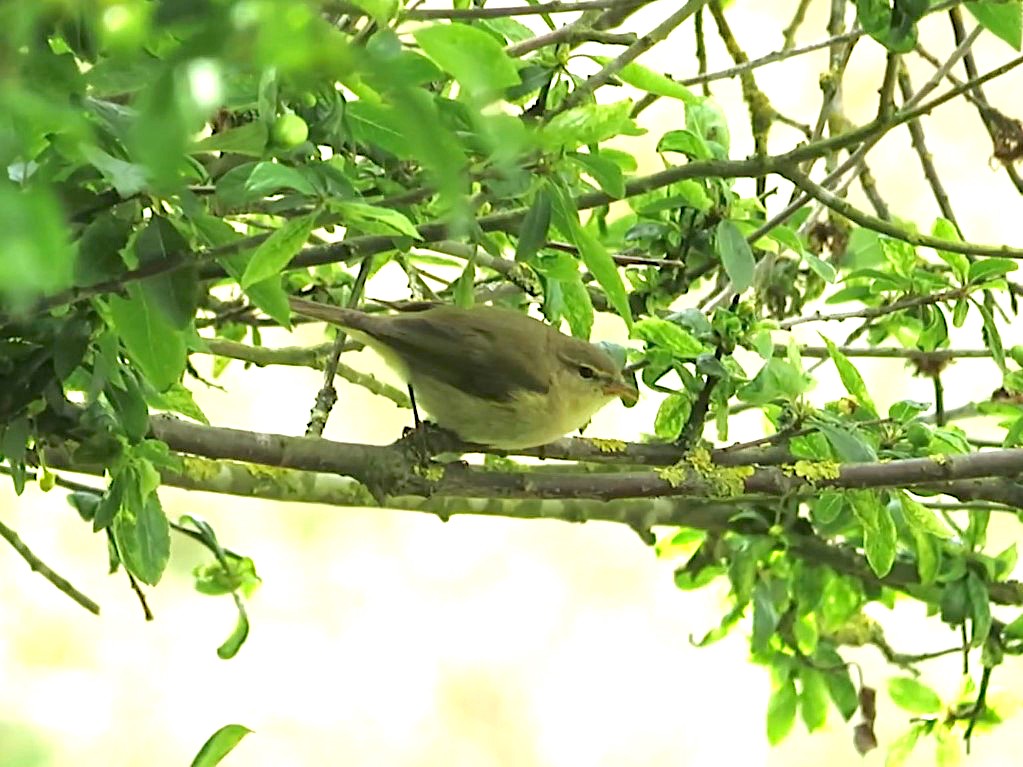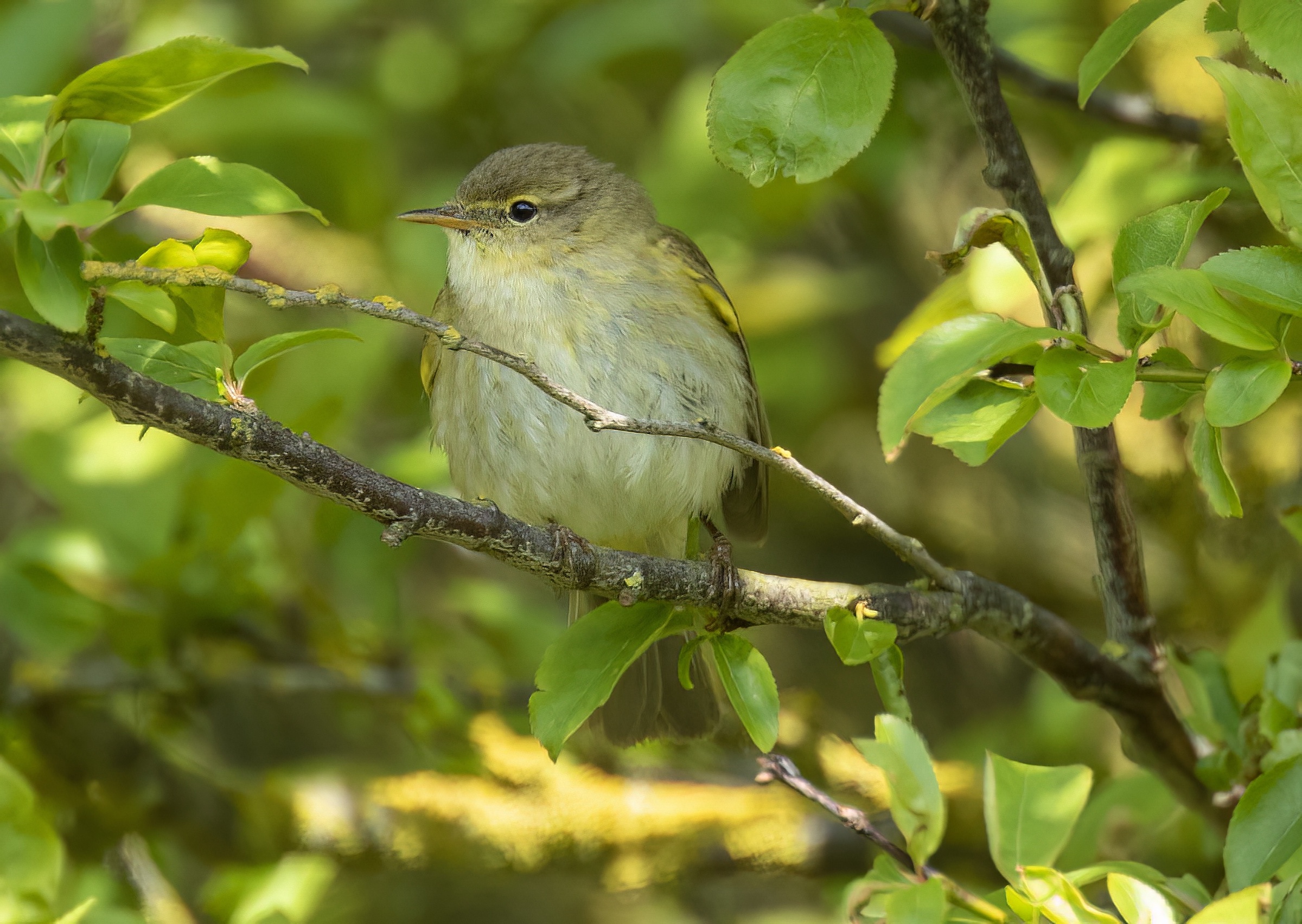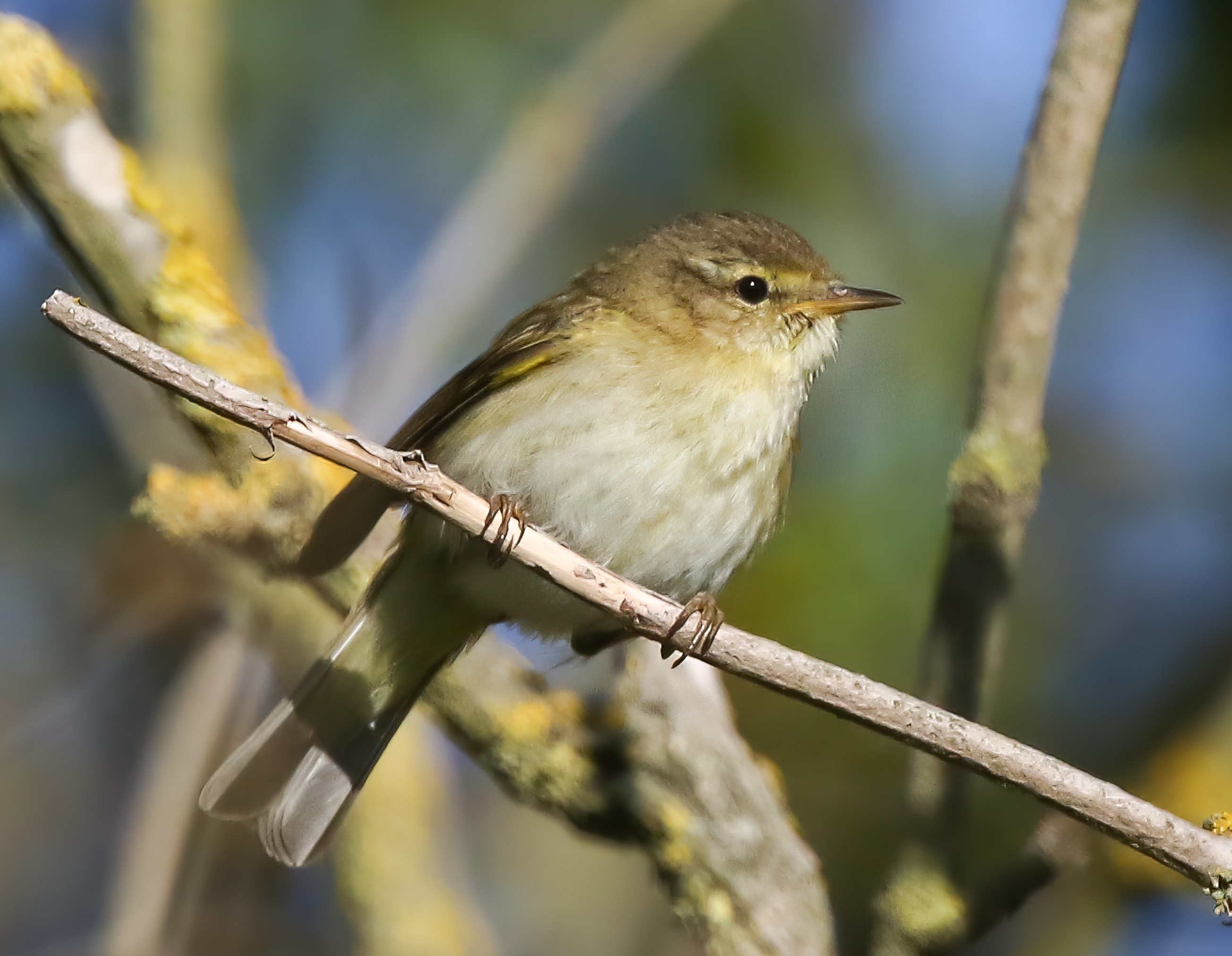Iberian Chiffchaff Phylloscopus ibericus
Very rare vagrant. South-western Europe.



Iberian Chiffchaffs: left and centre, Gibraltar Point NNR, May 7th (Ben Ward) and May 8th, 2019 (Graham Catley); right, Croft (Skegness), May 3rd-15th 2020 (John Clarkson)
The first county record was of a bird heard singing in the east dunes at Gibraltar Point, May 7th-10th 2019. The bird remained in the same area of dune over the next two days and mostly sang while fairly well concealed. The weather was generally damp with cold northerly winds, but the it did sing fairly regularly during the early morning periods, even when it was raining. Later, on the early morning of May 10th it delivered full song repeatedly, having moved over to a more open Sallow, and became bolder, moving almost out of cover, nearing the tops of the foliage. Shortly after this the bird disappeared.
The BOURC accepted the split of Chiffchaff into four species in their 25th Report (October 1998): Common Phylloscopus collybita; Canary Islands P. canariensis; Iberian P. brehmii; Mountain P. sindianus. In 2002, the Taxonomic Sub-committee of the BOURC recommended that the correct Latin name of Iberian Chiffchaff should be P. ibericus (Ibis 144:518-525). Following the split and a review of historic records, the first British record was a bird seen and sound recorded at Brent Reservoir, Greater London on June 3rd, 1972 (British Birds 93:329-332, 2000). After this first record the second wasn’t until April 14th 1992 on St Mary’s, Isles of Scilly. With greater awareness of the species unique song and subtle plumage characteristics more have followed, the majority occurring between March-July with the notable exception of one in Norfolk October 29th-November 13th 2016; to the end of 2018 there had been 69 accepted British records.
| Site | First date | Last date | Count | Notes |
| Gibraltar Point NNR | 07/05/2019 | 10/05/2019 | 1 | Adult male in song |
| Croft, Skegness | 03/05/2020 | 15/05/2020 | 1 | Adult male in song |
Finder's report: Iberian Chiffchaff, Phylloscopus ibericus, Gibraltar Point, May 7th, 2019, first county record.
by K M Wilson.
Tuesday May 7th was a day off and my first chance to get out to the East Dunes to check for migrants for a while. After a couple of hours there did not seem to be much change in the species numbers or composition since my previous visit there and I’d found myself spending considerable time looking at the emerging flora on the dune ridges and in the dune slack.
Whilst heading back towards Mill Hill at approximately 0930, I heard a brief burst of an odd chiffchaff type song coming from an area of thick scrub. After a short while it very briefly sang again. Even though it was quite subdued, almost sub-song, it was odd enough for me to consider the possibility of Iberian Chiffchaff Phylloscopus ibericus although it was difficult to pick out at the initial distance and with a noisy Song Thrush, Sedge Warbler, Linnets and Common Whitethroats obscuring it to some extent. Over the course of the next 55 minutes or so, I waited in the area, keeping my distance and listening out for the very occasional bursts of song. I was very aware of the variability of Common Chiffchaff song and several previous rejected claims of Iberian Chiffchaff based on song. The bird had moved a short way north into some dense cherry plums and it was here that it became more vocal – singing more loudly and prolonged and consistent with what I could recall from Iberian Chiffchaff song that I had heard previously. Three to four “chiff-chaffs” would be given before the song tailed off in a fairly quick scratchy trill. The song was quite erratic, and I noted that the start of the delivery was almost like the start of a Tree Pipit song with a Reed Bunting quality at the end. I put a message out to local birders, and I approached closer to attempt to get some sound recordings.
I got my first views of the bird at this point – it had stopped singing but was feeding very actively in the thick cover. I was able to get some good views. Initially it showed fairly smart olive upperparts and apparently pale legs – which made me wonder whether I had latched onto a Willow Warbler as one had been in song 100m further south earlier. The bird did show a fairly long primary projection beyond the tertials, the bill appeared fairly long and thin and showed quite extensive pale pinkish coloration and the supercilium was long and prominent and with a slight yellowish wash. The eye was deep set in the face and did not appear framed by split eye rings as Common Chiffchaff might look – rather there was a less distinct lower pale eye ring. Again, many of these features were almost reminiscent of Willow Warbler. The bird did show a prominent yellow surround to the alula however as seen in Common Chiffchaff. The underparts showed some yellowish wash around the throat and breast sides, but it was quite white otherwise. At this stage I was reminded of the call of Iberian Chiffchaff when I heard it make a soft siskin like call twice.
At around 11.00 the first birders arrived on the scene – I had lost track of the Iberian Chiffchaff at that time and it had gone silent. However, by about 1130 it had been re-located further to the south where Ben Ward, Owen Beaumont and James Siddle were able to obtain photographs and sound recordings.
N.B. at no time was the bird heard to sing continuously like a Common Chiffchaff – there were two of this species on territory not far away for comparison. The length of the bird’s full song was always short and truncated by a scratchy trill, sometimes just limited to the initial ‘chiff-chaff’ component of the song and not giving the end trill. It transpired that Nigel Lound and Phil Hyde had heard the bird at around 0810 from Mill Hill, whilst it had been giving occasional bursts of song.
The bird remained in the same area of dune over the next two days and mostly sang while fairly well concealed. The weather was generally damp with cold northerly winds, but the it did sing fairly regularly during the early morning periods, even when it was raining. Later, on the early morning of 10th May it delivered full song repeatedly, having moved over to a more open Sallow, and became bolder, moving almost out of cover, nearing the tops of the foliage. Shortly after this the bird disappeared.
The record was accepted by BBRC (British Birds 113(10): 585-655).
Editor’s note: This is the first county record of this species and one long awaited. The BOURC accepted the split of Chiffchaff into four species in their 25th Report (October 1998): Common Phylloscopus collybita; Canary Islands P. canariensis; Iberian P. brehmii; and Mountain P. sindianus. In 2002, the Taxonomic Sub-committee of the BOURC recommended that the correct Latin name of Iberian Chiffchaff should be P. ibericus (Ibis 144:518-525). Following the split and a review of historic records, the first British record was a bird seen and sound recorded at Brent Reservoir, Greater London on June 3rd, 1972 (British Birds 93:329-332, 2000).
References
Hunter, E. (2018). Iberian Chiffchaff: a new breeding species for Great Britain. British Birds 111(2): 100-108.
Wilson, K. (undated) Iberian Chiffchaff at Gibraltar Point May 7th-10th, 2019. Lincolnshire Bird Report 2019 pp. 214-5.
(Updated with reference to the new Birds of Lincolnshire (2021) November 2022)

